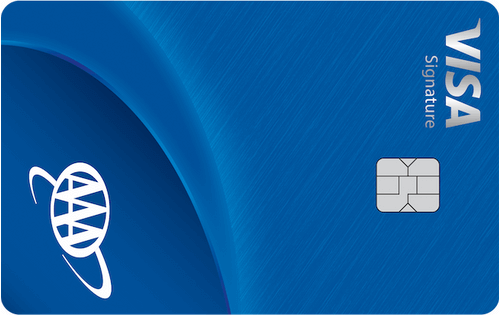- myFICO® Forums
- FICO Scoring and Other Credit Topics
- Understanding FICO® Scoring
- Datapoint: Aggregate utilization below 39%
- Subscribe to RSS Feed
- Mark Topic as New
- Mark Topic as Read
- Float this Topic for Current User
- Bookmark
- Subscribe
- Mute
- Printer Friendly Page
Datapoint: Aggregate utilization below 39%
Is your credit card giving you the perks you want?
Browse credit cards from a variety of issuers to see if there's a better card for you.
- Mark as New
- Bookmark
- Subscribe
- Mute
- Subscribe to RSS Feed
- Permalink
- Report Inappropriate Content
Re: Datapoint: Aggregate utilization below 39%
@SouthJamaica wrote:
The only thresholds of which I am sure are in individual utilization -- 29% and 49%.
In aggregate utilization I have never detected a threshold. However I believe I have detected that as aggregate revolving utilization goes down, my scores go up. But it's been gradual in either direction. No sudden bumps or thresholds.
In OP's case the change wasn't necessarily just crossing the 40% line, it was a substantial 5 1/2% drop from 44% to 38.5%. Gaining 11 points in FICO 8 for a 5 1/2% drop in utilization sounds about right to me.
Even within the Experian app, they reference aggregate as the factor to car about not individual. Watching all my reports, the major movement came from crossing 89/69/39 aggregate thresholds.
This isn't opinion that is what happened as I paid my CC debt down.
Experian's own input is to focus on aggregate.
I'm sure individual util matters but haven't seen movement from it yet.
TU: 769
EX: 767
EQ: 765
1/12 & 0/24
- Mark as New
- Bookmark
- Subscribe
- Mute
- Subscribe to RSS Feed
- Permalink
- Report Inappropriate Content
Re: Datapoint: Aggregate utilization below 39%
@FICOdawg wrote:
@SouthJamaica wrote:The only thresholds of which I am sure are in individual utilization -- 29% and 49%.
In aggregate utilization I have never detected a threshold. However I believe I have detected that as aggregate revolving utilization goes down, my scores go up. But it's been gradual in either direction. No sudden bumps or thresholds.
In OP's case the change wasn't necessarily just crossing the 40% line, it was a substantial 5 1/2% drop from 44% to 38.5%. Gaining 11 points in FICO 8 for a 5 1/2% drop in utilization sounds about right to me.
Even within the Experian app, they reference aggregate as the factor to car about not individual. Watching all my reports, the major movement came from crossing 89/69/39 aggregate thresholds.
This isn't opinion that is what happened as I paid my CC debt down.
Experian's own input is to focus on aggregate.
It could also be that you just dropped your utilization such a significant amount each month that the point gains appear as thresholds even though they are actually moving on a gradient. If you had dropped your utilization 89/79/69/59/49/39 you may have seen a very gradual change in your score.








FICO® 8: 806 (Eq) · 794 (Ex) · 775 (TU)
- Mark as New
- Bookmark
- Subscribe
- Mute
- Subscribe to RSS Feed
- Permalink
- Report Inappropriate Content
Re: Datapoint: Aggregate utilization below 39%
That's more or less what happened as I've paid down the debt. The only other change during all this was I got a 6 point last month for my only loan (car) went below 90% balance. This is about as good of data as you can get with single acct balance changing.
Next big data point will be crossing 29% which will be about 3+ months to cross. I plan to use my bonus to clean off the final amount in December so won't see the "final" score until January. If biz changes and bonus doesn't pay out then anothe 3-4 months long to PIF (but will still stay AZE1).
The only reference I've seen to indivical card metric is inside the Chase Credit Journey app, when I have it give the improve credit plan it actually states get my since card under 50%. NOTE: This is for VANTAGE SCORE 3.0
We can assume the individual card below 49% is a threshold.
TU: 769
EX: 767
EQ: 765
1/12 & 0/24
- Mark as New
- Bookmark
- Subscribe
- Mute
- Subscribe to RSS Feed
- Permalink
- Report Inappropriate Content
Re: Datapoint: Aggregate utilization below 39%
@Varsity_Lu wrote:
@FICOdawg wrote:
@SouthJamaica wrote:The only thresholds of which I am sure are in individual utilization -- 29% and 49%.
In aggregate utilization I have never detected a threshold. However I believe I have detected that as aggregate revolving utilization goes down, my scores go up. But it's been gradual in either direction. No sudden bumps or thresholds.
In OP's case the change wasn't necessarily just crossing the 40% line, it was a substantial 5 1/2% drop from 44% to 38.5%. Gaining 11 points in FICO 8 for a 5 1/2% drop in utilization sounds about right to me.
Even within the Experian app, they reference aggregate as the factor to car about not individual. Watching all my reports, the major movement came from crossing 89/69/39 aggregate thresholds.
This isn't opinion that is what happened as I paid my CC debt down.
Experian's own input is to focus on aggregate.
It could also be that you just dropped your utilization such a significant amount each month that the point gains appear as thresholds even though they are actually moving on a gradient. If you had dropped your utilization 89/79/69/59/49/39 you may have seen a very gradual change in your score.
+1
Exactly the point I was trying to make @Varsity_Lu































Total revolving limits 569520 (505320 reporting) FICO 8: EQ 689 TU 691 EX 682
- Mark as New
- Bookmark
- Subscribe
- Mute
- Subscribe to RSS Feed
- Permalink
- Report Inappropriate Content
Re: Datapoint: Aggregate utilization below 39%
@Thomas_Thumb wrote:
@SouthJamaica wrote:
@FICOdawg wrote:Was 44%. No other available changes. Next month I'll see singular data point of AZE1 impact by paying my Marriott card in full prior to the closing date as just learned that trick yesterday watching YouTube video.
3 card accounts. Next month will be 1 of 3 with balance.
How is it possible to experience a 5 1/2% drop in aggregate utilization without other changes, such as, e.g., changes in individual account utilization?
^ Agreed. One or two individual card utilizations must have changed either due to CLIs or balance paydowns. Highest UT on cards is a scoring metric.
Always mention highest card UT and number of cards with balances out of total cards. Those scoreable metrics are important regardless of threshold perceptions.
Whether or not a score change happens crossing a UT or cards reporting threshold is file/scorecard dependent. Scorecard assignments can change over time. Something previously inconsequential can become significant. I know! Such a change happened to me ever since my mortgage closed.
I know you don't believe me @Thomas_Thumb but I firmly believe that the number of high utilization accounts is another factor affecting the FICO 8 scores. For awhile I went through a period with aggregate utilization remaining more or less constant, and highest individual utilization remaining more or less constant, with a group of accounts hovering at 50%. It was clear to me that the number of 50% accounts that went over 50% was another scoring factor.































Total revolving limits 569520 (505320 reporting) FICO 8: EQ 689 TU 691 EX 682
- Mark as New
- Bookmark
- Subscribe
- Mute
- Subscribe to RSS Feed
- Permalink
- Report Inappropriate Content
Re: Datapoint: Aggregate utilization below 39%
@FICOdawg wrote:
Even within the Experian app, they reference aggregate as the factor to car about not individual. Watching all my reports, the major movement came from crossing 89/69/39 aggregate thresholds.
This isn't opinion that is what happened as I paid my CC debt down.
Experian's own input is to focus on aggregate.
I'm sure individual util matters but haven't seen movement from it yet.
It would be helpful if you can get a few aggregate data points on the way down such as: above 30 to below 29, above 20 to below 19, above 10 to below 9 and above 6 to below 5. Since 10/9 and 6/5 are considered likely thresholds, not crossing both at the same time would be informative. Also, try to avoid the 49% and 29% individual card thresholds when testing aggregate thresholds.
....
I just read a poster mention gaining 15 points for aggregate going from 16% to 14% due to a CLI on a $0 balance card. So no card UT change and no AG balance change. The CLI was a trigger event for a pull but, the score may have been influenced by a prior, non trigger, event. Otherwise 15% could be an AG threshold.
Let's assume aggregate UT has no thresholds and the above 11 point gain is from a 2% drop in AG UT. That suggests each 20% change in AG UT would impact score 150 points. Anyone buy that?
Fico mentions intervals are used for scoring metrics such as utilization. Going from one interval to another means crossing a boundry point (threshold)
Another factor to consider is aggregate balance. It is not as influential as utilization but still plays a roll.
Fico's reason codes list and Fico employees mentioned during a Q&A that: Fico considers aggregate balance in scoring. Unfortunately, this is rarely considered when data is presented so we have very little information on this metric.
Fico 8: .......EQ 850 TU 850 EX 850
Fico 4 .....:. EQ 809 TU 823 EX 830 EX Fico 98: 842
Fico 8 BC:. EQ 892 TU 900 EX 900
Fico 8 AU:. EQ 887 TU 897 EX 899
Fico 4 BC:. EQ 826 TU 858, EX Fico 98 BC: 870
Fico 4 AU:. EQ 831 TU 872, EX Fico 98 AU: 861
VS 3.0:...... EQ 835 TU 835 EX 835
CBIS: ........EQ LN Auto 940 EQ LN Home 870 TU Auto 902 TU Home 950
- Mark as New
- Bookmark
- Subscribe
- Mute
- Subscribe to RSS Feed
- Permalink
- Report Inappropriate Content
Re: Datapoint: Aggregate utilization below 39%
@SouthJamaica wrote:
The only thresholds of which I am sure are in individual utilization -- 29% and 49%.
-----------------------------------
I recall a recent thread of yours with some data supporting the view that a card threshold exists at 100%. That threshold is also discussed in the Birdman/CassieCard thread.
Fico 8: .......EQ 850 TU 850 EX 850
Fico 4 .....:. EQ 809 TU 823 EX 830 EX Fico 98: 842
Fico 8 BC:. EQ 892 TU 900 EX 900
Fico 8 AU:. EQ 887 TU 897 EX 899
Fico 4 BC:. EQ 826 TU 858, EX Fico 98 BC: 870
Fico 4 AU:. EQ 831 TU 872, EX Fico 98 AU: 861
VS 3.0:...... EQ 835 TU 835 EX 835
CBIS: ........EQ LN Auto 940 EQ LN Home 870 TU Auto 902 TU Home 950
- Mark as New
- Bookmark
- Subscribe
- Mute
- Subscribe to RSS Feed
- Permalink
- Report Inappropriate Content
Re: Datapoint: Aggregate utilization below 39%
@Thomas_Thumb wrote:I just read a poster mention gaining 11 points for aggregate going from 16% to 14% due to a CLI on a $0 balance card. So no card UT change and no AG balance change. The CLI was a trigger event for a pull but, the score may have been influenced by a prior, non trigger, event. Otherwise 15% could be an AG threshold.
Let's assume aggregate UT has no thresholds and the above 11 point gain is from a 2% drop in AG UT. That suggests each 20% change in AG UT would impact score 110 points. Anyone buy that?
Are we certain the data on the post you mentioned above is accurate? Not sure everyone is buying the story of that 11 point jump with the only trigger being a 2% util drop.








FICO® 8: 806 (Eq) · 794 (Ex) · 775 (TU)
- Mark as New
- Bookmark
- Subscribe
- Mute
- Subscribe to RSS Feed
- Permalink
- Report Inappropriate Content
Re: Datapoint: Aggregate utilization below 39%
@SouthJamaica wrote:
@Thomas_Thumb wrote:
@SouthJamaica wrote:
@FICOdawg wrote:Was 44%. No other available changes. Next month I'll see singular data point of AZE1 impact by paying my Marriott card in full prior to the closing date as just learned that trick yesterday watching YouTube video.
3 card accounts. Next month will be 1 of 3 with balance.
How is it possible to experience a 5 1/2% drop in aggregate utilization without other changes, such as, e.g., changes in individual account utilization?
^ Agreed. One or two individual card utilizations must have changed either due to CLIs or balance paydowns. Highest UT on cards is a scoring metric.
Always mention highest card UT and number of cards with balances out of total cards. Those scoreable metrics are important regardless of threshold perceptions.
Whether or not a score change happens crossing a UT or cards reporting threshold is file/scorecard dependent. Scorecard assignments can change over time. Something previously inconsequential can become significant. I know! Such a change happened to me ever since my mortgage closed.
I know you don't believe me @Thomas_Thumb but I firmly believe that the number of high utilization accounts is another factor affecting the FICO 8 scores. For awhile I went through a period with aggregate utilization remaining more or less constant, and highest individual utilization remaining more or less constant, with a group of accounts hovering at 50%. It was clear to me that the number of 50% accounts that went over 50% was another scoring factor.
I do believe 50% on individual card matters.
But, this aggregate datapoint is crystal clear. No other data changed, no CLI landed on the report as I can see all of that in Experian app.
TU: 769
EX: 767
EQ: 765
1/12 & 0/24
- Mark as New
- Bookmark
- Subscribe
- Mute
- Subscribe to RSS Feed
- Permalink
- Report Inappropriate Content
Re: Datapoint: Aggregate utilization below 39%
@Varsity_Lu wrote:
@Thomas_Thumb wrote:I just read a poster mention gaining 11 points for aggregate going from 16% to 14% due to a CLI on a $0 balance card. So no card UT change and no AG balance change. The CLI was a trigger event for a pull but, the score may have been influenced by a prior, non trigger, event. Otherwise 15% could be an AG threshold.
Let's assume aggregate UT has no thresholds and the above 11 point gain is from a 2% drop in AG UT. That suggests each 20% change in AG UT would impact score 110 points. Anyone buy that?Are we certain the data on the post you mentioned above is accurate? Not sure everyone is buying the story of that 11 point jump with the only trigger being a 2% util drop.
Actually the point gain listed in the other thread was 15 points, not 11. The 11 points was this OP. I got it crossed.
Do I believe there is a major aggregate UT threshold at 15%, highly unlikely - imo. However, the AG UT variable appears well isolated due to a CLI with nothing else changing. Unless ... the boost actually came from a past, non trigger, event. On the surface that data appears to be as "crystal clear" as this OP's
The point I was attempting to make in my prior post is utilizations are scored in discrete intervals - not continuous y = f(x). If it were continuous there would be no double digit "jumps" associated with some minor UT changes and no score movement with other minor UT changes.
Hypothesized thresholds need to be validated through repeatability - ideally from the initial tester getting an additional set of data points above/below. Then further datapoints from multiple independent testers before being adopted as "official". This is easy for highest card UT and not so hard for low AG thresholds. Much more difficult for high AG UT thresholds.
Fico 8: .......EQ 850 TU 850 EX 850
Fico 4 .....:. EQ 809 TU 823 EX 830 EX Fico 98: 842
Fico 8 BC:. EQ 892 TU 900 EX 900
Fico 8 AU:. EQ 887 TU 897 EX 899
Fico 4 BC:. EQ 826 TU 858, EX Fico 98 BC: 870
Fico 4 AU:. EQ 831 TU 872, EX Fico 98 AU: 861
VS 3.0:...... EQ 835 TU 835 EX 835
CBIS: ........EQ LN Auto 940 EQ LN Home 870 TU Auto 902 TU Home 950






